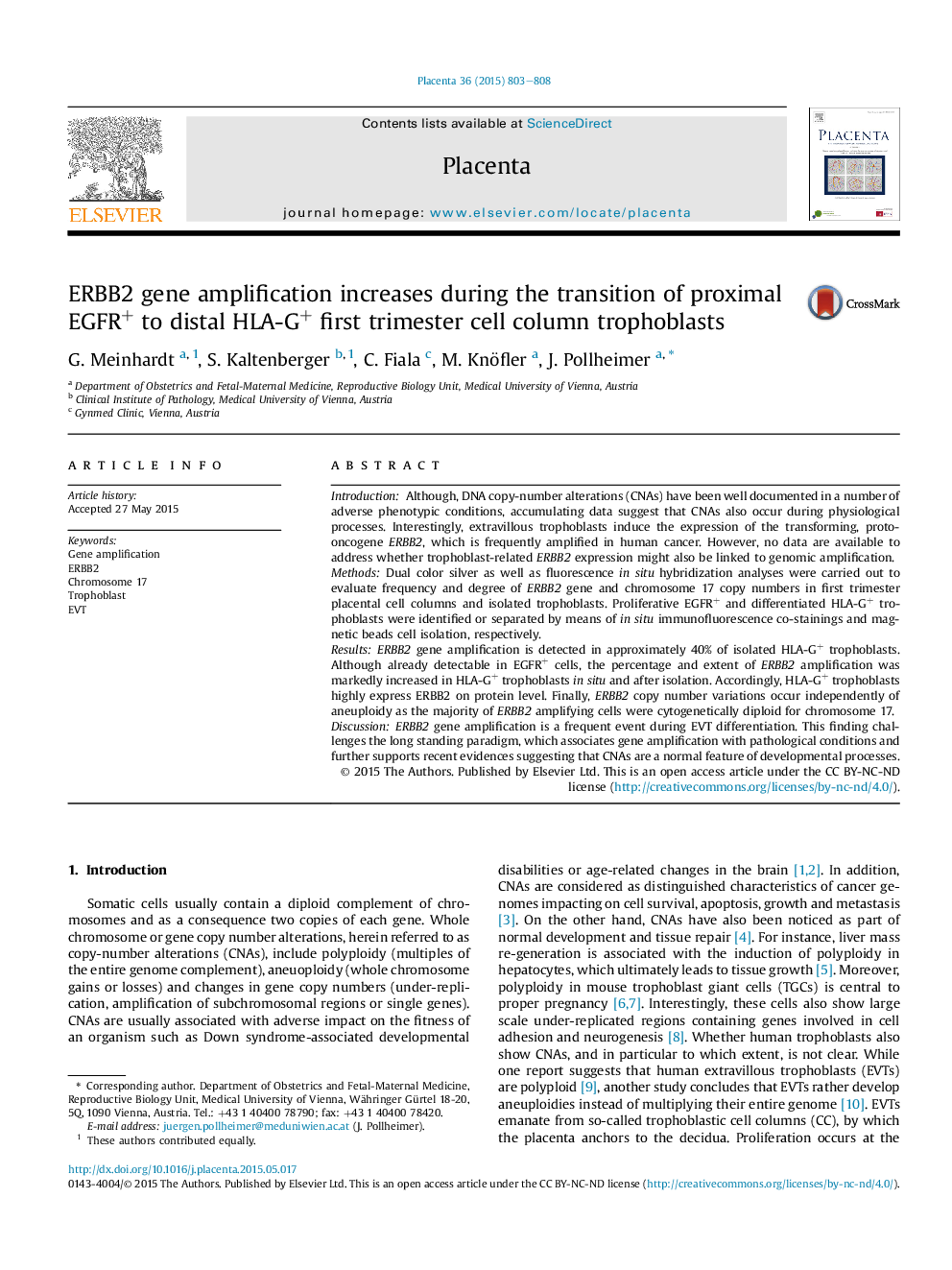| Article ID | Journal | Published Year | Pages | File Type |
|---|---|---|---|---|
| 5894653 | Placenta | 2015 | 6 Pages |
â¢Our data suggest that human trophoblasts show amplification of the proto-oncogene ERBB2.â¢Degree and frequency of ERBB2 amplification increases in HLA-G+ trophoblasts.â¢ERBB2 amplification occurs independently of chromosome 17 gains.
IntroductionAlthough, DNA copy-number alterations (CNAs) have been well documented in a number of adverse phenotypic conditions, accumulating data suggest that CNAs also occur during physiological processes. Interestingly, extravillous trophoblasts induce the expression of the transforming, proto-oncogene ERBB2, which is frequently amplified in human cancer. However, no data are available to address whether trophoblast-related ERBB2 expression might also be linked to genomic amplification.MethodsDual color silver as well as fluorescence in situ hybridization analyses were carried out to evaluate frequency and degree of ERBB2 gene and chromosome 17 copy numbers in first trimester placental cell columns and isolated trophoblasts. Proliferative EGFR+ and differentiated HLA-G+ trophoblasts were identified or separated by means of in situ immunofluorescence co-stainings and magnetic beads cell isolation, respectively.ResultsERBB2 gene amplification is detected in approximately 40% of isolated HLA-G+ trophoblasts. Although already detectable in EGFR+ cells, the percentage and extent of ERBB2 amplification was markedly increased in HLA-G+ trophoblasts in situ and after isolation. Accordingly, HLA-G+ trophoblasts highly express ERBB2 on protein level. Finally, ERBB2 copy number variations occur independently of aneuploidy as the majority of ERBB2 amplifying cells were cytogenetically diploid for chromosome 17.DiscussionERBB2 gene amplification is a frequent event during EVT differentiation. This finding challenges the long standing paradigm, which associates gene amplification with pathological conditions and further supports recent evidences suggesting that CNAs are a normal feature of developmental processes.
